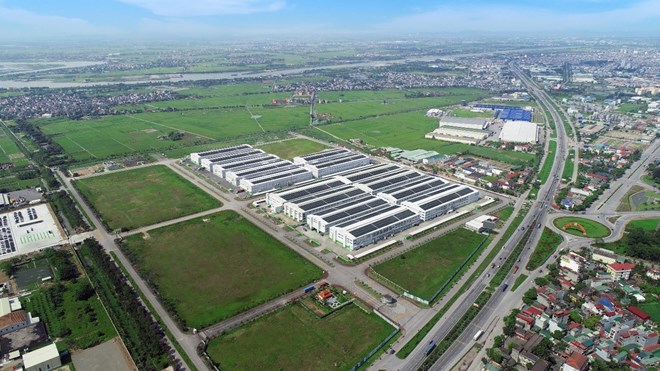On April 14, 2025, Member of the Politburo, Standing Deputy Prime Minister Nguyen Hoa Binh signed Decision No. 759/QD-TTg approving the Scheme on arrangement and reorganization of administrative units at all levels, accordingly, merging Hai Duong province and Hai Phong city into a city directly under the Central Government called Hai Phong city.
The administrative - political center is located in Thuy Nguyen City (Hai Phong) today.
Hai Duong province has experienced many merger and separation.
Decision to separate Hai Phong from Hai Duong
According to "Dai Viet History of the Secretary: The Luc Luc" (Social Sciences Publishing House), Hai Duong's name was officially born in 1469, under the time of King Le Thanh Tong, the administrative unit at that time was Thua Tuyen (equivalent to the current provincial level).
Through the kings, this Thua Tuyen was changed to Hai Duong, Hai Duong and Hai Duong towns and changed his place to place the main political agency.
In 1831, Hai Duong became an independent province with 5 governments and 19 districts.
According to the book "Vietnam - Historical events (1858 - 1945)" (Social Sciences Publishing House, 1981), in 1886, Po Be (Paul Bert) was sent to Vietnam to rule Trung Ky and Tonkin with a plan to build Ninh Hai area into a city with a military and economic strategic position.
On September 11, 1887, the Northern Ambassador issued a Decree to establish Hai Phong province on the basis of a part of Hai Duong province, including An Duong, An Lao, Kien Thuy, Thuy Nguyen and Tien Lang districts. The provincial capital is located in Ninh Hai. The name Hai Phong was born from there.

Hai Duong once merged with Hung Yen
On January 26, 1968, the National Assembly Standing Committee issued Resolution No. 504 to approve the consolidation of Hai Duong and Hung Yen provinces into Hai Hung province from March 1, 1968.
This decision comes from the desire to create a strong enough administrative unit to optimize the management and exploitation of resources of the two provinces. The consolidation is also aimed at promoting regional strengths, creating favorable conditions for production and people's lives in the context at that time.
When consolidated, Hai Hung province has 20 districts and 2 towns. The province has 407 communes and 5 towns, the population is 1,630,000.
On November 6, 1996, the 10th Session of the IXth National Assembly issued a Resolution of Hai Hung Province to re -establish Hai Duong and Hung Yen province after 29 years. In particular, Hung Yen province includes Hung Yen town and 5 districts.
Hai Duong province includes Hai Duong town and 8 districts: Cam Binh, Chi Linh, Gia Loc, Kim Mon, Nam Thanh, Ninh Giang, Thanh Mien and Tu Ky.
Experiencing many consolidation, splitting and adjusting administrative boundaries, Hai Duong now has 2 cities, 1 town and 9 districts.
According to Decision No. 759/QD-TTg approving the scheme of arranging and reorganizing administrative units at all levels, these administrative units of Hai Duong will merge with Hai Phong city into a city directly under the Central Government called Hai Phong city.











